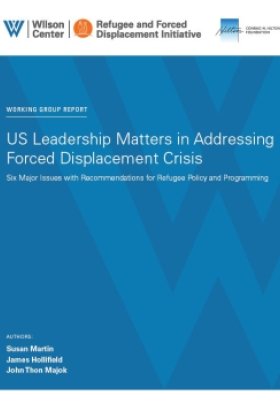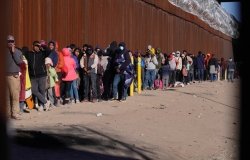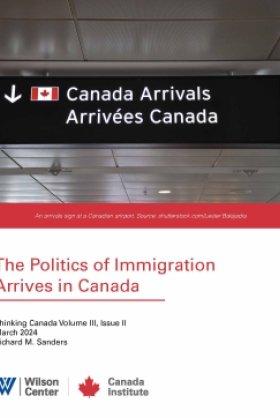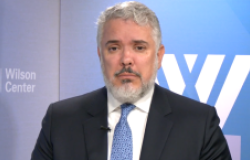Threading the Needle on Immigration Reform in the United States
Is this finally the year that Congress reforms U.S. immigration policy and provides a path to citizenship for the estimated 11 million undocumented immigrants in the country? It would seem so, given the various encouraging statements from Republican and Democratic leaders over the past week. The policy calculations seem favorable, too, with years of net-zero migration from Mexico and the prospect of reduced migration pressures in the future. However, what remains highly unpredictable is the political calculus on immigration, with dynamics at the national and local level potentially at odds with each other.

By Karthick Ramakrishnan
Is this finally the year that Congress reforms U.S. immigration policy and provides a path to citizenship for the estimated 11 million undocumented immigrants in the country? It would seem so, given the various encouraging statements from Republican and Democratic leaders over the past week. The policy calculations seem favorable, too, with years of net-zero migration from Mexico and the prospect of reduced migration pressures in the future. However, what remains highly unpredictable is the political calculus on immigration, with dynamics at the national and local level potentially at odds with each other.
From a policy perspective, conditions today seem favorable for a comprehensive solution to undocumented immigration. Unemployment is a significant problem in several regions of the United States, but well below the highs reached in 2009. Perhaps more importantly for immigration policy, migration from Mexico has plummeted over the last few years. This is due, in part, to a lackluster economic recovery in the United States and much greater immigration enforcement, as measured both by budgetary spending and the record annual number of deportations. Other reasons for net-zero migration include economic improvements and declines in fertility in Mexico, and increased enforcement actions in Mexico against unauthorized migration from Central America. Thus, proponents of immigration reform today can make a credible case that immigration reform will not lead to new waves of unauthorized migration, as it did after 1986.
While overall policy conditions may be favorable for immigration reform, the political conditions are far more uncertain. National leaders in the Republican Party are certainly well aware that they risk losing out on many future presidential elections if they cannot make inroads into the Latino electorate. Asian Americans are also a rapidly growing part of the electorate, and immigration is a significant part of their shifting voting patterns in presidential elections.
Still, most Republicans in the U.S. House and Senate face a far more pressing and immediate political problem than winning future presidential elections, which is to figure out ways to overcome potential primary challengers in 2014. Unlike the general electorate, for whom immigration is not a salient issue, Republican party activists care much more about immigration, and they hold more restrictive views. It is this Republican incumbent fear of primary challengers that enabled groups like NumbersUSA and the Federation for American Immigration Reform to prevent the U.S. House from passing comprehensive immigration reform in 2006, and to maintain the Senate filibuster in 2007.
Thus, even if House and Senate leaders are able to forge an agreement on key principles, the fear of primary defeats in 2014 will induce reluctance among many Republican legislators. This is particularly true in the current set of Republican House districts, where conservative primary challengers can defeat incumbents and still have a good chance of winning the general election.
Finally, Congressional rules may introduce roadblocks to reform. Party control in the current Congress is a hybrid of the circumstances in 2006 and 2007—Republicans control the House, while Democrats have a majority in the Senate. So, just as in 2006, we might see the Senate pass legislation knowing that it will grind to a halt in the Republican-controlled House. Or, legislation can falter in the Senate as it did in 2007, unable to garner the 60 votes necessary to break a filibuster.
Three factors, however, may allow immigration legislation to overcome these local political hurdles. First, there is evidence that Republican voters are growing more supportive of immigrant legalization, although these opinions may shift during the course of the year as groups like NumbersUSA mobilize their supporters. Second, the prospect of labor disruptions in various states has made business groups much more interested in federal immigration reform. These groups, particularly agricultural interests, might serve as a countervailing force against restrictionist groups in many Congressional districts. Finally, if Congress fails to act in a timely manner in 2013, President Obama could make good on his threat to send his own bill for consideration, increasing pressure for legislative action. Indeed, the President could go even further in compelling Congress to act, by threatening to expand its current program known as Deferred Action on Childhood Arrivals (DACA), to include all unauthorized immigrants in the United States.
Of course, there are other political developments that could affect the likelihood of immigration reform winning legislative approval—such as protest actions by DREAMer activists, foreign policy crises, and strategic calculations by Republicans to gain flexibility on some issues like immigration by holding firm on others such as gun control.
Regardless of the trajectory and outcome, immigration legislation is guaranteed to provide us with many unexpected twists, turns, and suspenseful moments in the coming year.
Karthick Ramakrishnan is associate professor of political science at the University of California, Riverside and past fellow at the Woodrow Wilson International Center for Scholars. He has written extensively on immigration policy, including a law review article and current book project on the interplay between national and local dynamics on immigration policy in the United States. For more details on his work, visit www.karthick.com
About the Author

Karthick Ramakrishnan
Associate Professor of Political Science, University of California-Riverside

Mexico Institute
The Mexico Institute seeks to improve understanding, communication, and cooperation between Mexico and the United States by promoting original research, encouraging public discussion, and proposing policy options for enhancing the bilateral relationship. A binational Advisory Board, chaired by Luis Téllez and Earl Anthony Wayne, oversees the work of the Mexico Institute. Read more









